Looking to elevate the finish of your stainless steel products? Sandblasting is a key technique that can transform both appearance and functionality.
As a metal fabrication expert with extensive experience in various finishing techniques, including sandblasting, I bring a depth of knowledge that can significantly benefit your operations.
Sandblasting in stainless steel involves high-speed abrasive materials cleaning or etching the surface, preparing it for further processing or as a final aesthetic.
In this guide we will explore the best practices, equipment choices, and safety measures for effective sandblasting, tailored to enhance your business operations.
Keep reading to discover more about stainless steel sandblasting.
1. Overview of Sandblasting in Metal Fabrication
Sandblasting, a process integral to metal fabrication, is widely recognized for its efficiency in preparing metal surfaces. This technique involves propelling abrasive materials against metal surfaces at high velocity, effectively removing impurities and old coatings. Surprisingly, it’s a preferred method in metal fabrication due to its ability to smoothen surface, essential for future treatments like painting or powder coating.
In the context of metal fabrication, sandblasting is more than just a cleaning process. It plays a crucial role in enhancing the adhesion of coatings and improving the overall durability of metal products. The precision and thoroughness of sandblasting make it an indispensable step in the preparation of stainless steel and other metals, ensuring they are optimally conditioned for further processing or final use.

2. Benefits of Sandblasting for Stainless Steel
Following the overview of sandblasting in metal fabrication, it’s essential to delve into how specifically stainless steel benefits from sandblasting process. Here are the key benefits:
- Enhanced Surface Cleanliness: Sandblasting thoroughly removes surface contaminants from stainless steel, such as oils, dirt, and rust. This deep cleaning is vital for maintaining the integrity and appearance of the metal. It ensures that stainless steel surfaces are impeccably clean, providing an ideal canvas for any subsequent treatments.
- Improved Adhesion of Coatings: One of the significant advantages of sandblasting is its ability to improve the adhesion of coatings on stainless steel. By creating a slightly roughened surface texture, sandblasting ensures that paints or other coatings adhere more effectively, leading to longer-lasting finishes.
- Uniform Surface Finish: Sandblasting provides a consistent and uniform finish across the entire surface of stainless steel components. This uniformity is crucial for both aesthetic appeal and functional consistency, especially in applications where the surface finish is critical for performance or appearance.
- Preparation for Further Treatments: Lastly, sandblasting prepares stainless steel for further treatments like painting, powder coating, or anodizing. By effectively cleaning and texturizing the surface, it ensures that these subsequent processes are more efficient and effective, resulting in a higher quality final product.
3. The Process of Sandblasting Stainless Steel
Building on the benefits of sandblasting for stainless steel, let’s delve into the step-by-step process that ensures these advantages are fully realized. Here’s a detailed exploration of sandblasting stainless steel process:
Step#1 Preparing Stainless Steel
The initial step involves preparing the stainless steel for sandblasting. This means ensuring the metal is free from any large debris or oils that could interfere with the sandblasting process. It’s also crucial to secure the steel in place to prevent movement during sandblasting, which could lead to uneven treatment.
Step#2 Selecting the Right Abrasive
Choosing the appropriate abrasive material is a critical decision in this process. For stainless steel, materials like aluminum oxide or silicon carbide are often preferred due to their angular shape and hardness, which allow for effective surface etching without causing excessive wear to the metal. Enhance the efficiency and quality of your surface treatments by selecting abrasives that align with your commitment to excellence.
Step#3 Setting the Sandblasting Equipment
Properly setting up the sandblasting equipment is essential for an effective process. This includes adjusting the pressure, nozzle size, and the distance from the stainless steel surface. The settings need to be tailored to the specific requirements of the project, considering factors like the thickness of the steel and the desired surface finish.
Step#4 Performing Sandblasting
The actual sandblasting involves moving the nozzle in a controlled, steady motion over the surface of the stainless steel. This movement should be uniform to ensure an even surface finish. It’s a skilled task that requires precision to avoid overblasting or underblasting certain areas. Zemetal’s skilled technicians perform this critical sandblasting step, ensuring top-notch quality and consistency in every project.
Step#5 Post-Sandblasting Cleaning
After sandblasting, the stainless steel must be thoroughly cleaned to remove any residual abrasive particles. This step is crucial to prepare the surface for any subsequent treatments like coating or painting. Proper cleaning ensures that the benefits of sandblasting, such as improved adhesion and surface finish, are fully realized.
4. Advanced Techniques and Innovations in Sandblasting
Following our exploration of the standard process of sandblasting stainless steel, let’s now turn our attention to the advanced techniques and innovations that are shaping the future of sandblasting. Here are the following:
Wet Sandblasting
Wet sandblasting is an innovative technique that involves mixing water with the abrasive material. This method significantly reduces dust generation, making it a more environmentally friendly and healthier option for operators. Additionally, wet sandblasting can help to cool the metal surface, preventing warping or other heat-related damage during the process.
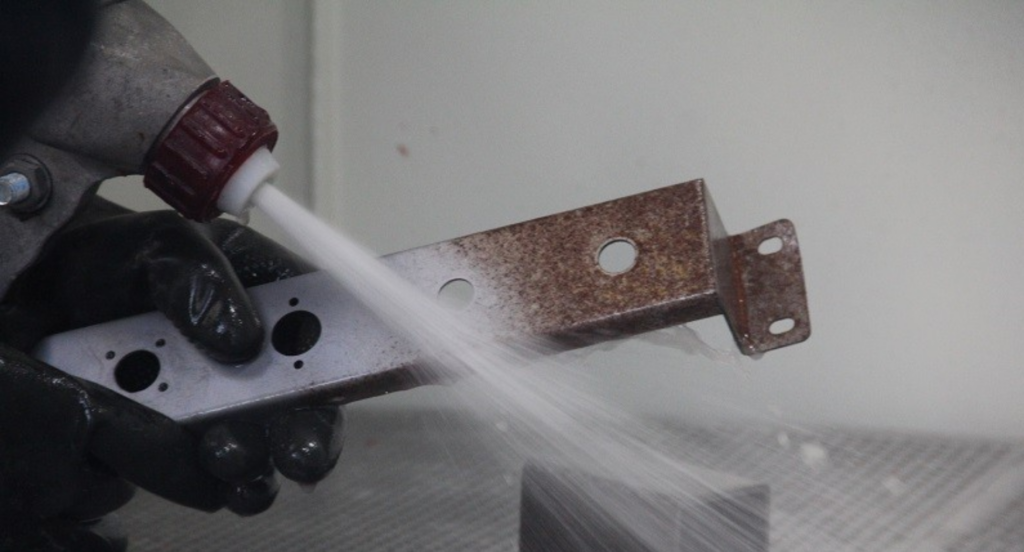
Automated Sandblasting Systems
Automation in sandblasting represents a significant leap in efficiency and consistency. Automated systems use robotic arms or conveyor systems to move stainless steel through the sandblasting process. Zemetal integrates such automated systems to enhance the precision and efficiency of their sandblasting services. This automation ensures a uniformly treated surface while also increasing throughput and reducing labor costs.
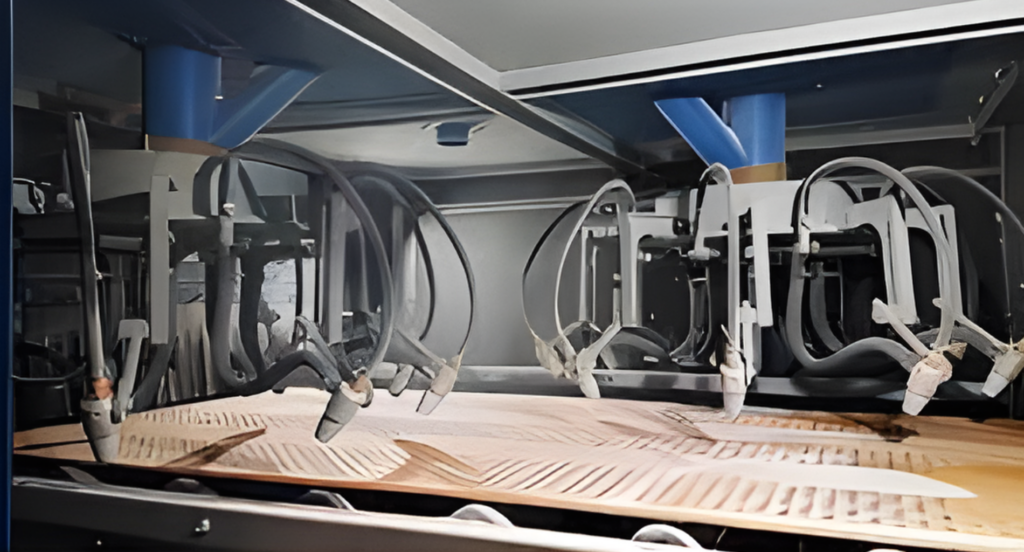
Eco-Friendly Abrasives
The development of eco-friendly abrasives is a key innovation in sandblasting. These materials, such as recycled glass or walnut shells, are not only effective at surface preparation but also reduce the environmental impact of the process. They offer a sustainable alternative to traditional abrasives without compromising on quality or efficiency.
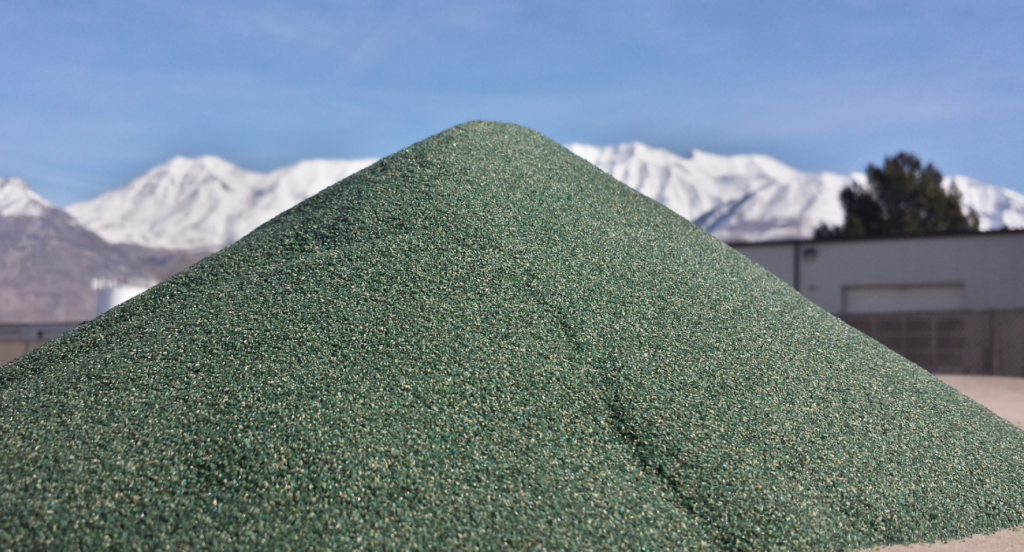
Precision Blasting Techniques
Advancements in precision blasting allow for more detailed and controlled sandblasting. Techniques like micro-abrasive blasting use fine, high-precision nozzles and carefully regulated pressure settings. This precision is particularly beneficial for intricate designs and delicate areas, ensuring targeted and accurate surface treatment.
5. Applications of Sandblasting Stainless Steel
With the advancements and innovations in sandblasting, the application of this technique in various industries has become more diverse and significant. Below are the different applications of stainless steel sandblasting:
Aerospace Industry
In the aerospace industry, sandblasting stainless steel is crucial for ensuring the durability and safety of components. The process is used to prepare surfaces for bonding and coating, which are essential for parts exposed to extreme conditions. Sandblasting in this sector is synonymous with precision and high-quality finishes, crucial for aerospace standards.
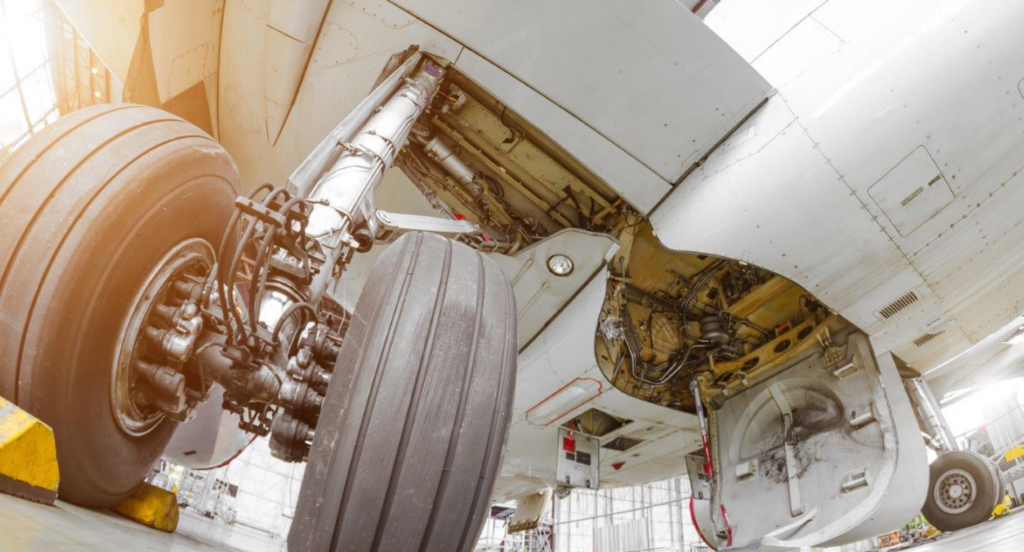
Automotive Industry
The automotive industry frequently employs sandblasting for stainless steel parts to enhance their appearance and resistance to corrosion. Components like exhaust systems, trim pieces, and engine parts are often sandblasted to prepare them for protective coatings, ensuring longevity and aesthetic appeal. Drive your automotive business forward with the superior finish that sandblasting provides.

Medical Equipment Manufacturing
According to Fortune Business Insights, the medical equipment manufacturing sector, where the market is projected to reach $799.67 billion by 2030, sandblasting plays a crucial role. It is employed to prepare surgical tools and medical devices, particularly those made of stainless steel, ensuring their surfaces are impeccably clean and free from contaminants.
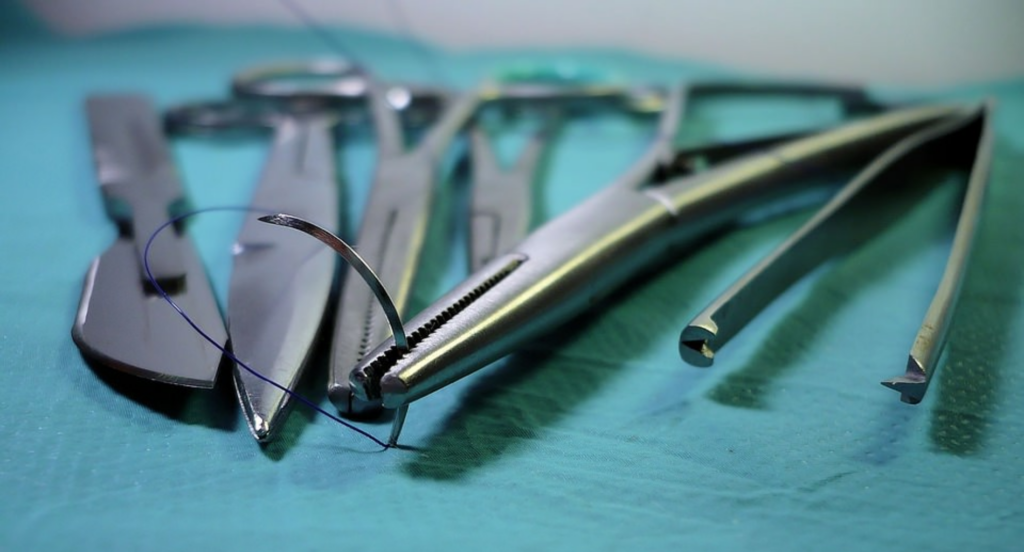
Architectural and Structural Applications
In the field of architecture and construction, sandblasting stainless steel is used for both functional and aesthetic purposes. For example, in the construction of a bridge, sandblasting is employed to prepare steel surfaces for coatings that protect against weathering and corrosion. This not only extends the lifespan of the structures but also enhances their visual appeal.

6. Safety Measures During Sandblasting
The diverse applications of sandblasting stainless steel in various industries underscore the importance of safety in this process. Here are some essential safety measures to ensure protection during sandblasting operations:
Personal Protective Equipment (PPE)
Operators must wear appropriate personal protective equipment, including respirators, safety goggles, gloves, and protective clothing. This equipment protects against inhaling abrasive blasting, prevents skin abrasions, and shields the eyes from flying particles. For example, when sandblasting automotive parts, technicians should wear full-face masks to protect against fine metal particles.
Ventilation and Dust Extraction
Proper ventilation and dust extraction systems are critical in a sandblasting environment. These systems help to remove airborne particles and reduce the risk of respiratory problems. In enclosed spaces, like sandblasting booths, ensuring efficient airflow and dust collection is imperative for maintaining a safe working environment. Safeguard your team’s health with advanced ventilation and dust extraction systems.
Training and Operational Procedures
Comprehensive training and adherence to operational procedures are essential for safety. Operators should be trained in the correct use of equipment, understanding of safety protocols, and emergency procedures. Regular safety drills and updates on safety standards help maintain a high level of safety awareness.
This table details the crucial aspects of training and operational procedures, emphasizing their significance in ensuring safety in the workplace.
| Aspect | Description | Importance in Safety Management |
| Equipment Usage Training | Educating operators on correct equipment handling | Reduces risk of accidents |
| Safety Protocol Understanding | Familiarizing with safety guidelines and protocols | Ensures preparedness in emergencies |
| Emergency Procedure Training | Training for response in crisis situations | Enhances quick and effective responses |
| Regular Safety Drills | Practicing and reinforcing safety actions | Keeps safety skills sharp and relevant |
| Updates on Safety Standards | Keeping abreast of latest safety practices | Ensures compliance with current norms |
Regular Equipment Maintenance
Regular maintenance of sandblasting equipment is vital to prevent malfunctions that could lead to accidents. Inspecting hoses, nozzles, and air tanks for any signs of wear and tear should be a routine procedure. For instance, checking for leaks in the hoses can prevent sudden loss of pressure, which could lead to accidents.
7. 3 Tips for Choosing the Right Sandblasting Media
While prioritizing safety measures during sandblasting is critical, equally important is selecting the right sandblasting media for efficient and effective results. Here are the tips that you should consider when choosing the right one:
#1 Consider the Material Being Blasted
The type of material you are sandblasting should primarily guide your choice of media. For softer materials, gentler media like walnut shells or plastic beads are ideal to avoid damaging the surface. For harder materials like stainless steel, stronger abrasives like aluminum oxide are more suitable. The key is to choose a medium that is hard enough to clean the surface effectively but not so hard that it damages the material.
#2 Determine the Desired Finish
Different media produce different finishes on the blasted surface. For a smoother finish, finer abrasives like glass beads are appropriate. Coarser media like steel grit will leave a rougher surface, which may be desirable for certain applications, like creating a surface profile for paint adhesion. Understanding the final application of blasted material is crucial in selecting the appropriate media.
#3 Assess Environmental and Health Factors
Some blasting media can be hazardous to both the environment and the health of operators. For instance, silica sand, while effective, poses serious health risks due to silica dust inhalation. Environmentally friendly and safer alternatives like organic materials should be considered, especially in enclosed spaces. Balancing the effectiveness of the media with health and environmental considerations is essential for responsible operation.
Conclusion
This comprehensive guide to sandblasting stainless steel offers valuable insights and techniques essential for achieving optimal results in metal fabrication. It serves as a resource for businesses seeking to enhance their processes and product quality through effective sandblasting.
If you’re looking for expert assistance in sandblasting stainless steel, Zemetal is your ideal partner. To explore how we can assist with your sandblasting needs and elevate your metal fabrication projects, contact us today.
Dive Deeper Into Our Resources
Looking for more diverse service options? Browse through our handpicked selections:
For some insightful reads, we’ve curated a list of recommended articles just for you:
Still haven’t found what you’re looking for? Don’t hesitate to contact us. We’re available around the clock to assist you.








